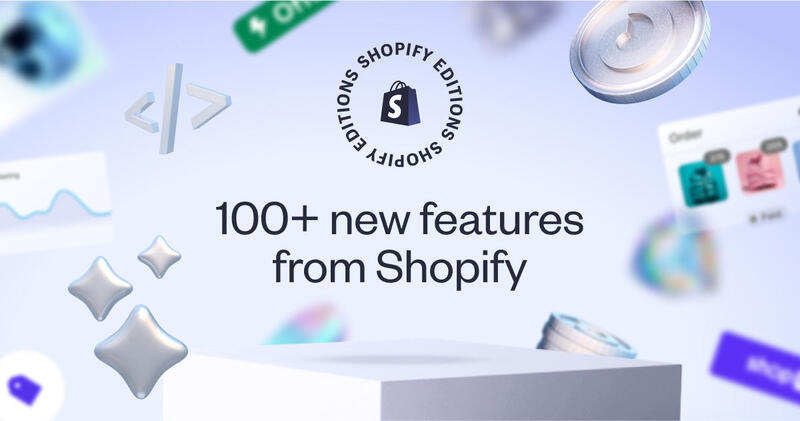Shopify Upgrades: 2,000 Variant Limit & AI Powered POS for Omnichannel

Shopify has unveiled two game-changing updates that every DTC founder should prioritize: a monumental increase in product variant limits and a sophisticated, AI-enhanced POS system designed for seamless omnichannel retail. As we approach peak season, these enhancements are crafted to empower ambitious brands—allowing them to expand product lines and integrate digital and physical retail seamlessly, all within Shopify's ecosystem. Let's dive into what these changes mean for you and how you can leverage them as a savvy operator.
Breaking the 100-Variant Barrier: Enter the Era of 2,048 Variants
The old 100-variant limit was a notorious bottleneck for brands with extensive or customizable catalogs. Thankfully, that's history. As of October 2025, Shopify has elevated the variant limit to an astounding 2,048 per product—a transformative leap that turns a persistent merchant grievance into a strategic advantage (Shopify Changelog; Shopify Community).
This isn't just about bigger numbers—it's about operational freedom. Apparel brands can now list every conceivable color and size combination under a single product, while custom goods merchants can create intricate mix-and-match kits without splitting SKUs. As one Shopify partner noted,
"No more workarounds and hacky solutions" (Excyted.io).

The impact? Cleaner catalogs, enhanced SEO, reduced inventory chaos, and a smoother customer experience. If you've ever faced the awkward task of explaining to a shopper why their favorite color was "on another page," you know how significant this is.
Performance Boost: Shopify didn't just raise the cap—they turbocharged the system. Creating large-variant products is now 10 times faster, and even single-variant products enjoy a 33% speed boost in the admin interface (FuturMedia). Shopify has implemented sensible guardrails: storefronts load a maximum of 250 variants by default to maintain speed, and there's a 250-media-item cap per product (FuturMedia; Shopify Community). The last limitation to note: you're still restricted to three options per product (e.g., size, color, material), but the variant ceiling is now higher than almost any other major platform (Medium).

Bottom line: If duplicate listings or clunky app workarounds have been holding you back, it's time to consolidate, streamline, and offer a richer, more discoverable product experience (Shopify Blog). The payoff? Reduced admin overhead, increased conversions, and a catalog that scales with your creativity (Shopify Blog).
AI-Powered POS: Revolutionizing Omnichannel Retail
Shopify's Q4 innovations aren't just about more variants—they're about making omnichannel retail truly accessible for DTC brands. The new Shopify POS transforms into a comprehensive retail OS, integrating AI with unified customer data for seamless sales everywhere (CarThustle).

Shop Pay Network Leverage: When a customer makes an in-store purchase, their profile is linked to Shopify's 200M+ Shop Pay user base. This means instant customer recognition—eliminating awkward "Have you shopped with us before?" questions. Your staff gains full visibility into order history, preferences, and loyalty status, enabling personalized recommendations and service (Shopify Enterprise Blog).

Proven Impact: These aren't just theoretical upgrades. Little Words Project used Shopify POS’s email capture and unified profiles to achieve a 95% capture rate at checkout and a 21% increase in POS orders with emails attached (Shopify Enterprise Blog). Apparel brand PAIGE combined online and in-store data for a 50% boost in online conversion and enhanced customer service (Shopify Enterprise Blog).
AI at Work: Shopify’s Sidekick AI and analytics deliver insights, recognize sales patterns, and provide smart product suggestions in real time (Shopify Enterprise Blog). The latest POS app version equips staff with AI-powered search and upsell tools, allowing smarter service and sales (OnTap Group). And the clincher: Gartner forecasts that brands using AI-driven personalization will outsell competitors by 20%, with Shopify merchants already experiencing a 15-25% increase in conversion rates when using these tools (Cleargo).

Offline Momentum: These updates come as Shopify POS powers hundreds of thousands of stores worldwide (Unofficial Shopify Podcast) and offline revenue surges by 33% (Shopify Investor News). For DTC brands entering brick-and-mortar, events, or retail partnerships, the ability to sync inventory and customer data in real time is a game-changer.
Strategy: Operator Moves for the New Shopify Stack
So, what's the playbook for operators in this new Shopify era?
1. Expand and Consolidate Your Catalog:
Unleash those product ideas you sidelined due to complexity. Merge split listings. Offer the "endless aisle" experience—without the endless admin (Shopify Changelog). Just ensure your theme and any custom apps are updated to handle the new variant logic.
2. Leverage Unified Omnichannel Data:
Treat each touchpoint as a data boost for the next. An in-store purchase should trigger smarter online retargeting, and an online return should be resolved in-store effortlessly. Shopify's AI-enhanced POS and Shop Pay network make this achievable for brands of all sizes.
4. Stay Agile—Test, Iterate, Repeat:
With fewer technical constraints, the only limit is your team's creativity and execution. Use the expanded variant capacity and omnichannel data to run experiments—bundles, niche variants, pop-up activations—then capitalize on what resonates with your shoppers.
The Takeaway: Shopify is Doubling Down on Operator Empowerment
Shopify's Q4 enhancements send a clear message: they're eliminating constraints, adding intelligence, and equipping founders with tools once reserved for enterprises. More variants? Get creative. Smarter POS? Be more data-driven and personal, wherever you sell. As Shopify President Harley Finkelstein stated, the aim is to make the platform "more powerful" and to simplify growth for every merchant, across every channel (Canadian Grocer).
For DTC founders, this is the stack to build on—less time wrestling with platform limitations, more time innovating, selling, and cultivating lifelong customer relationships.
Subscribe for weekly DTC insights.










